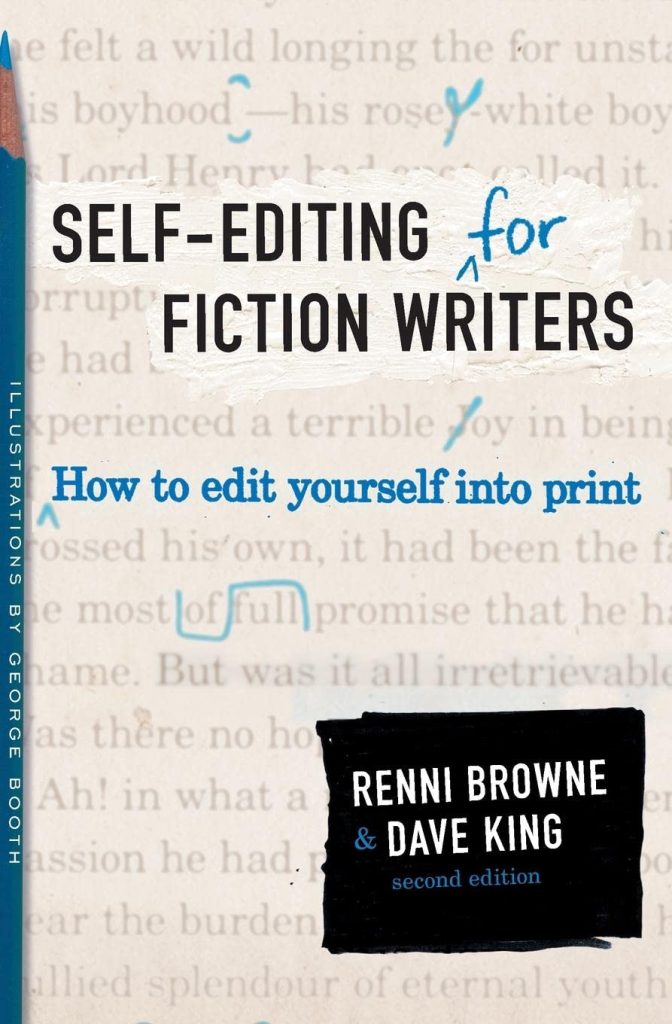Proportions: The Importance of Details
Jonathan Mejia

Something I have struggled with in my writing is proportions. This has to deal with whether my writing has descriptions that are too detailed or not detailed enough. When I realized this was a problem I dealt with, I revisited all of my writing and realized I needed to trim it down. Much of my writing featured sentences like: “Aiden walked to the sofa and sat down. He looked around and saw the TV remote across the room. He stood up, walked over to the remote, picked it up, and walked back to the sofa and sat down.” I found myself over-describing my characters’ actions.
In Self-Editing for Fiction Writers, Renni Browne and Dave King offer advice on how to deal with proportions. They argue that overdoing it with the proportions can patronize readers. But sometimes, descriptions may be used to your advantage. This article will cover some tips that Browne and King offer to better your proportions in writing or avoid proportion issues. One thing to keep in mind is that proportion issues don’t need to be fixed until your final draft is complete. Your story will be riddled with all kinds of problems in your earlier drafts, so don’t be ashamed or discouraged if you have found any, even proportion issues. I will use one of my short stories, “Stuck in the Past,” as sample of how to apply these tips.
Tip #1: Close Reading
Browne and King suggest that as you write those earlier drafts, you take time away from your work for a few days or weeks and return to your writing. Proceed to read it as a reader rather than the author and cross out the things you dislike or can be shorted.
Here is the sample from earlier shortened down:
“Aiden sat on the sofa and looked around the room. He saw the TV remote across the room and went to get it and returned to the sofa.”
Tip #2: Don’t Forget to Keep Dimension
Be cautious to avoid crossing everything out from your story so it becomes too plain and simple. It is okay to add dimension to your story with descriptions. Be sure to keep in the atmosphere of the setting or characters.
“Aiden sat on the cream leather sofa facing a large wooden TV entertainment center with a thick television ornamented with yellow, red, and white input cables. A slim vertical gaming console was next to the TV, standing on a thick cable box. The TV remote across the room. He crossed the room to retrieve it.”
Tip #3: When to Describe Action
Although we don’t need to constantly describe characters doing things like walking, interacting with the environment, and sitting, sometimes the actions can give us a glimpse into the character we are reading about. We can grasp their personality and better understand the situation that they are in.
“Aiden tip-toed into the living room. He hesitated before sitting on the worn leather sofa. The leather began to squeak the moment he touched the surface. He checked around to make sure no one had heard.”
Situations like this require a little context as to why a character might be described doing something as simple as sitting down or walking around. So, re-read your story and think about the role of descriptions in different areas of your story.
Tip #4: Details Through Your Character’s Eyes
If you are worldbuilding and want to describe the world your character is in, it might be best to show the world through their eyes. This offers an intimate point of view from your character. You can describe the setting they are in as they interact with it or describe the fast-paced final battle through your character’s eyes. As long as it moves the plot and character forward, this can be a big help in controlling the proportions of your story. There is only so much a character can see, much like you and I, which will help prevent info-dumping on the world you are building. Here’s another scene from the same story I wrote using this tip:
“Aiden stepped into the front yard. The pine tree growing the center of the yard was surrounded by several years’ worth of pine cones in various states of decay. A big red rubber ball rested on the lawn underneath the pine tree. It was covered in dew and pine needles. The minivan in driveway seemed untouched and unused, even though his parents had owned it for at least a few years.”
Here, we can see the character looking around his front yard, which limits the world to what the character sees rather than what the author knows about the world they are creating.
Conclusion
There are plenty of more things you can do to control the proportions in your story. You don’t need to make your story plain and simple lacking in descriptions; instead, experiment with when to use descriptions of action, settings, and emotions to the best effect. It is not just about shortening and cutting your story to its essentials but also adding or keeping what is moving it forward without patronizing readers or leaving them unsatisfied with your writing.
Works Cited
Browne, Renni, and Dave King. “Chapter 4: Proportion.” Self-Editing for Fiction Writers: How to Edit Yourself into Print, Second ed., HarperCollins Publishers, New York, NY, 2004, pp. 67–81.

0 Comments